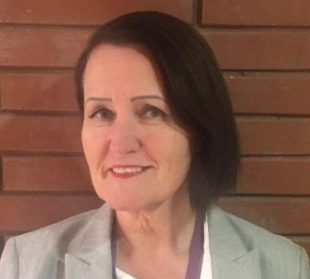Emotions are still raw and the process of recovery ongoing for the survivors, family and friends affected by the Grenfell Tower fire. In the days that followed this tragedy, the worst of times gave rise to the best of humanity as residents groups, local health and care services and the wider public rallied to support a community in shock and grief. Social workers were among their number, proving their worth in a crisis as they helped those affected navigate the often confusing and traumatic aftermath.
It is therefore a privilege to host this very special two part blog post from Liz Hughes. Currently working in a London borough as Head of Service for Prevention and Care Management, Liz qualified as a social worker almost 21 years ago. Since then she has taken on various roles within multiple settings including hospital and community social work, learning disabilities and older people.
Although she has been deploying her wealth of skills and experience at management level for the past ten years, when the call came requesting her help, it soon became clear that her compassion, knowledge and skills were as effective in the field as they had always been.
In part one of her blog she explains how trepidation quickly gave way to focused, practical compassion – and a bit of detective work!

My Grenfell experience – part one
I received the phone call from my line manager at the council on the Saturday morning after the fire.
The request was very clear: would I be willing to be a key worker to one of the families affected by the Grenfell Tower tragedy?
Social work instincts
Without hesitation, I said I would. I chose to do so, not just because of my training as a social worker but as a human being responding to a crisis situation in which innocent people were experiencing loss, injury and confusion.
After committing to help my immediate thoughts were a mix of professional social work responses, trepidation and natural human empathy.
The trepidation came from not knowing what to expect, having seen the whole tragedy unfold in the media over the previous few days. That and the knowledge I was about to enter a whirlwind of panic, fear and practical solution finding.
Responding
My adrenaline soon kicked in and I was off to catch the bus. The tube had been suspended as it was the line that passed near the tower which, at the time, had been assessed as unstable.
As I arrived at the centre of operations known as the hub, I was surprised and enthused to see so many other volunteers from other London Boroughs and the Home Counties. From social workers to managers, we were all willing and able to do whatever was necessary to assist.
First day
There was a sense of organised chaos. Efforts were being led by children and family’s services with many senior managers designating different tasks to people. It was a holistic, no holds barred approach in that no specialisms were considered necessary - we collaborated in a spirit of mutual trust and confidence in the people organising support.
As we waited in clusters for the names of our assigned families, I wondered what challenges I would encounter with mine. I would first need to assess the impact of this human tragedy on them as individuals and as a family unit. I would also need to consider the practical issues, such as clothing, food and shelter in the context of their immediate priorities.
Given the exceptional circumstances, I felt it was important to adjust my usual local authority style of assessment in favour of just listening to what they wanted to say rather than using a formula. Being responsive to their situation would place the emphasis on their own choices about the support they needed. I would soon discover I enjoyed this approach immensely.
The tower
Once I had the family’s name I had to walk past the tower to the rest centre to find them. The tower was still smouldering and I stopped to look at it and almost cried. People around me were lighting candles, crying, gathering together, praying - and the press were everywhere. It was horrific to see and was like walking into an alternate reality, not a residential area in Notting Hill.

My designated family weren’t at the rest centre, or at the address I was given, so I returned to the hub but they couldn’t help. I wasn’t familiar with the local area but - determined to find them - I wrote a letter with my phone number to put through the letterbox of the given address the next day.
The following morning, after knocking with no reply, I was about to post the letter when the flat mate of the family’s daughter answered. She skyped the daughter’s boss who contacted me within half an hour and I was then able to give her my contact details to pass on. With two-way contact established, it turned out the family had been placed in a hotel off Kensington High Street. I was nearly there, very pleased with myself in my new role of amateur detective!
In 'My Grenfell experience – part two' Liz finally meets her designated family and begins the process of building rapport and establishing the support they will need to rebuild their lives.
2 comments
Comment by Hannah R Vince posted on
Thank you, Liz,
Must admit we feel that we walked this path with you although not directly involved. What a challenging complex situation. And who best to be given that role. The expression "dog with a bone" comes to mind. I am sure that the family so value your determination in resolving their situation and providing the best outcome for them.
Comment by Natalie Simpson posted on
This is so inspiring and truly reflects the dedication and commitment you had to all those involved. Thank you for sharing this